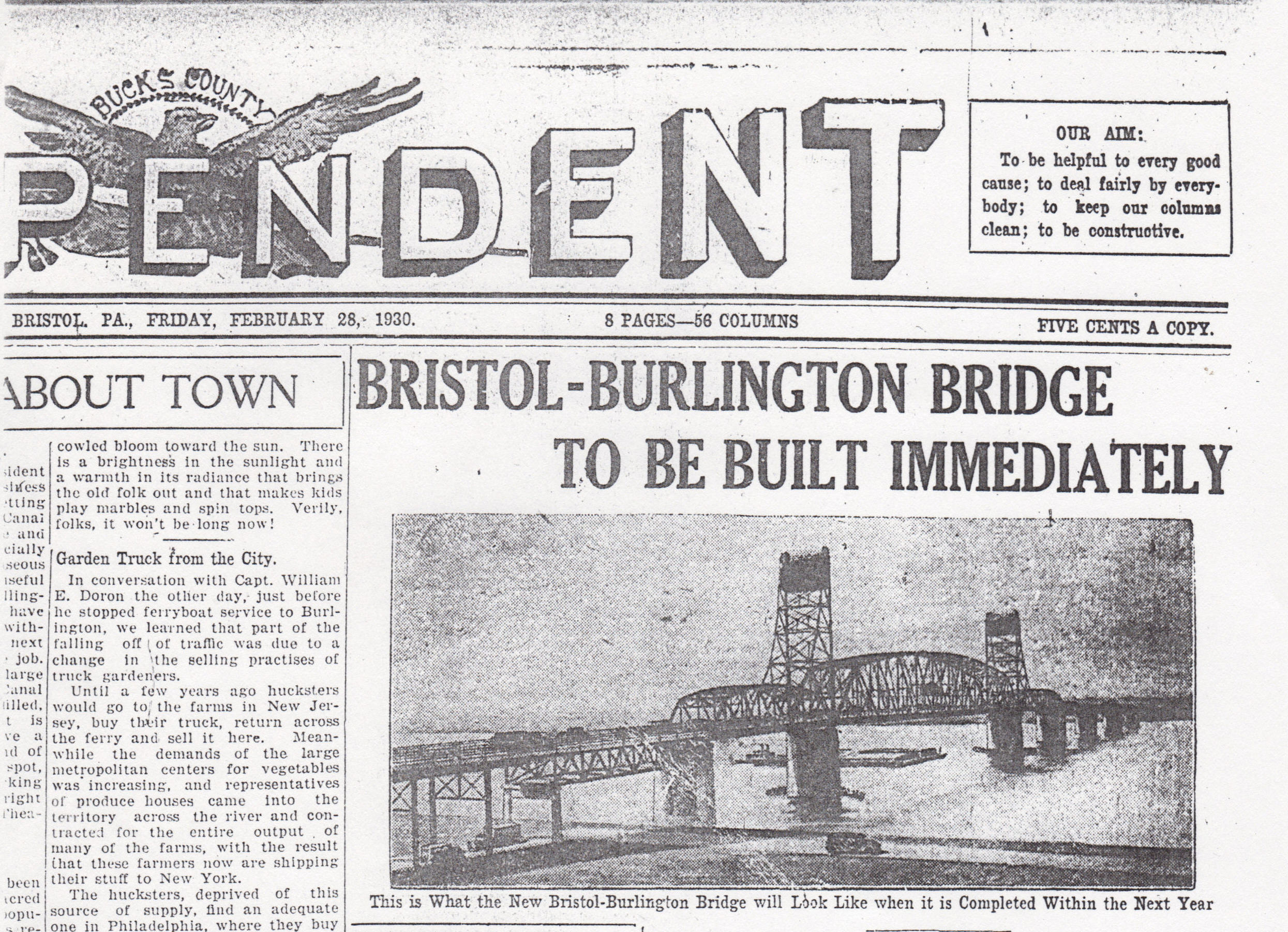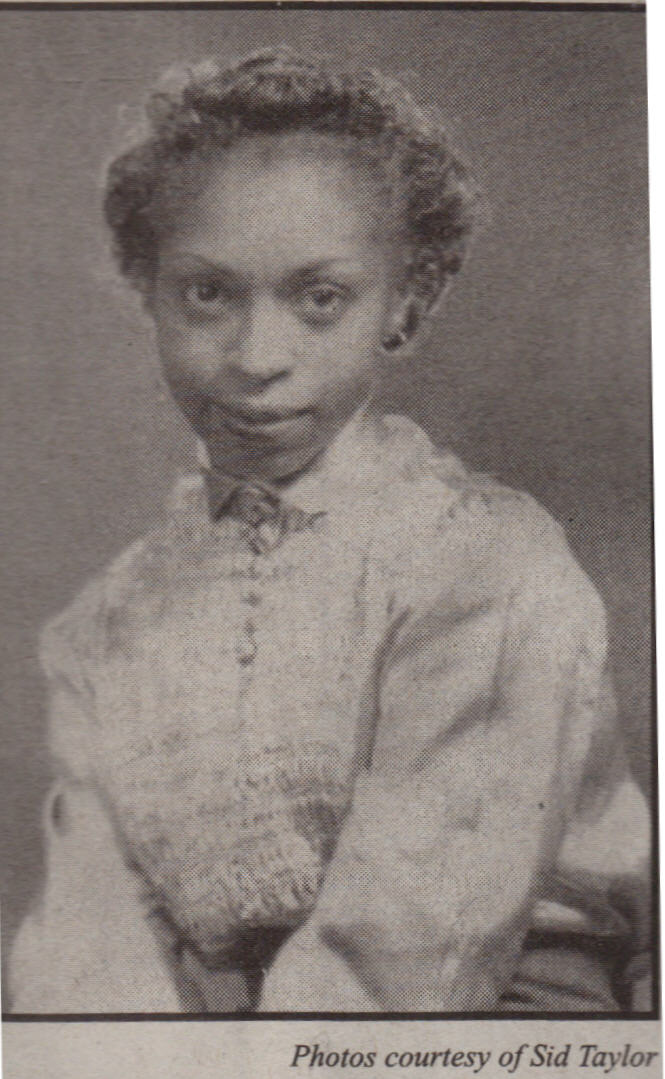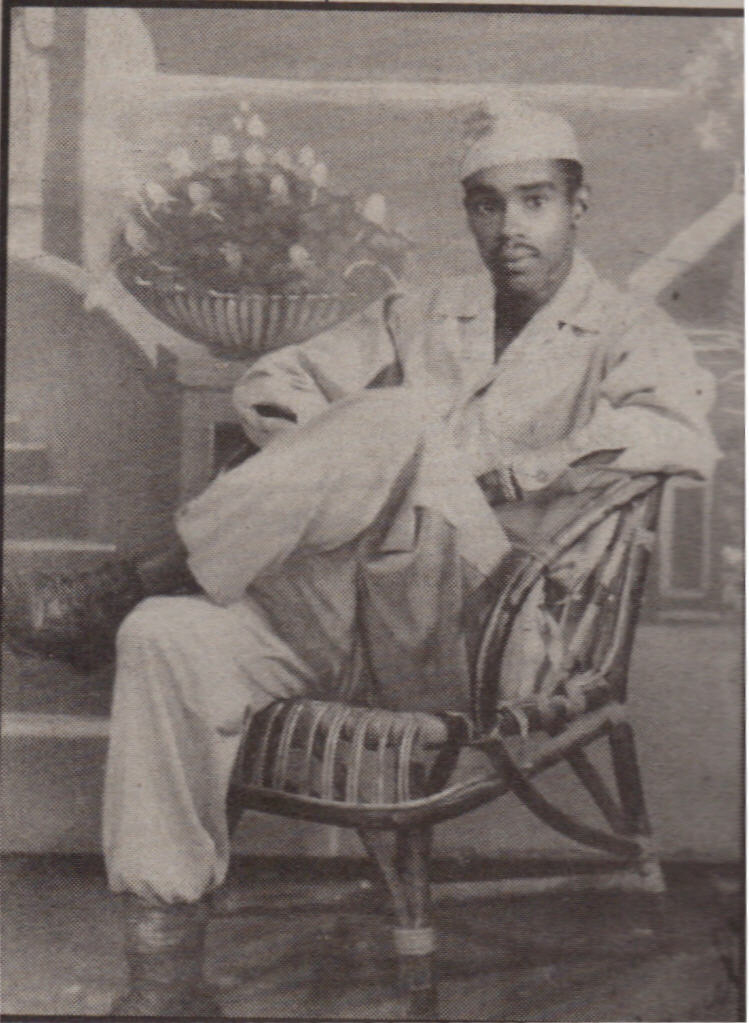sample of Venie's artwork
Mary Lavenia “Venie” [Ross] Sanes
on left, Venie's husband Roque Sanes
Tubman monument on the banks of the Delaware River
in the Lions Waterfront Park
Destination: Freedom
by Cate Murway
Five foot two Harriet “Hat” Ross Tubman [1822-1913], born into slavery as Araminta "Minty” Ross, was the first woman “conductor” on the legendary Underground Railroad, a labyrinth network of routes, using the North Star as a guide, as well as people and houses that helped slaves escape to freedom. This true heroine was the daughter of Benjamin Ross and Harriet "Rit" Green, slaves brought from Africa in chains.
Clearing land and planting and building the dikes, dams, roads, and buildings necessary for plantation jobs without modern machinery was extremely hard labor, especially in the hot, humid climate of the South.
Harriet served as a Nurse, abolitionist, scout, cook and a spy for the Union Army during the Civil War, working on behalf of the former slaves, making approximately nineteen trips over a decade with her 300 plus “passengers” to their safety in Canada, using complex communication systems.
As a result, she became reverently known as "The Moses of Her People" but there was a $40,000 reward offered by slaveholders for her capture, dead or alive.
About 1844 she married a local free black gentleman named John Tubman, shedding her childhood name “Minty” in favor of Harriet.
In 1896, she was a delegate to the first convention of the National Federation of Afro-American Women.
Ninety-three year old Harriet died of pneumonia in near poverty on March 10th 1913.
Descendents of her extended family still reside in historic Bristol on the Delaware today.
A 6-foot tall monument was erected in her honor on the banks of the Delaware River in the Lions Waterfront Park.
Her late husband was Bristol born Roque Reed Sanes, a Bragg Brothers Construction crew worker who was bilingual and could speak German.
“Everyone was friends but there weren’t many black people in Bristol.”
As a youth, she wore dresses and played in Grundy Park and she said, “I remember the mules when they pushed the rig around.”
Clifford L. Anderson was the Burgess [1917-1943].
One recollection is of making their “oleo’ margarine and using yellow dye for coloring.
“There was no air conditioning. We had fans. No screens and lots of flies.”
They kept cool swimming in the canal and at Silver Lake.
Her husband’s grandfather, John Reed worked for the textile manufacturer, Senator Joseph R. Grundy as a handyman and he was one of the few who owned a car in the Great Depression in 1932.
They “used the trolley and the Pennsylvania Railroad train and the [William E.] Doran boat over the Delaware”.
She remembers the “Bristol Burlington Bridge” being built “in 1926.”
Construction of the bridge actually began on April 1, 1930.
Venie lived in one of the homes on Pine Street, the first to have indoor bathrooms. They “may have been poor but that just meant you had to work for a living”.
“Wages were very cheap but living was very cheap. Maybe made $20.00 a week and rent was $20.00 a month. I made $49.00 a week at General Motors in Trenton making pieces for airplanes.”
She vividly remembers competing against children in other Borough wards as she ran relays and did the “broad jump”.
She ate JR Field’s dad’s delicious hotdogs with the special sauce. “He just made them good.”
They had no televisions then so they watched the “newsreel” at the Grand Theatre.
She fondly remembers The Junior Drum and Bugle Corps Bracken “Cavaliers”, organized in1924, marching in the town parades.
“I quit high school and I was gonna retire. My mother said ‘oh, no, you’re not’ and she gave me her housekeeping job for the Walter Leedom family on Radcliffe Street. I ordered lamb chops for them ‘cuz I wanted lamb chops. I didn’t know anything about housekeeping.”
It was Mary Sanes’ grandfather William Henry Harrison Ross who came from the Ross plantation in Maryland who had always spoken of cousin, Harriet.
He was the son of Martin Ross, born 1793, the father of 17 children, the youngest of whom was Benjamin Ross, the father of Harriet Ross Tubman.
Her parents had moved to Bristol with the two eldest children in 1917. Her mother, Ida Evelyn [Young] Ross who had attended the Queen Anne School in Maryland, cooked at St. Mark Rectory until she was 86 years old and also worked at Leedom’s Carpet Mill. She was a twin, who died in 2001 at the age of 105 years old. Her twin sister, Daisy Young had died of the highly contagious bacterial disease, the whooping cough.
Her father, Earl Julius Ross, Sr. attended the picturesque Hampton University, VA [agricultural] and was a contractor who worked at the Radcliffe Street shipyard and on the RR. He was the first cousin of Harriet Tubman and a driver for Booker T. [Taliaferro] Washington, best remembered for helping black Americans rise up from the economic slavery that held them down long after they were legally free citizens.
Venie is the only surviving sibling of that Ross family. Her sister, seamstress Pauline Ross Davis [husband builder Harry Joshua Davis] was the mother of Borough resident, African American Historical Cultural Society of Bucks County Secretary / Treasurer, (Marie) Louise Davis, BHS ’54 /Tyler School of Art. Pauline also worked as a housekeeper and a cook for Ann Hawkes Hutton, the author of The Pennsylvanian: Joseph R. Grundy.
Pauline’s daughter, Louise mixes song and the spoken word while portraying Tubman, the well-known abolitionist and humanitarian. She also has painted with melted beeswax and pigment, brilliantly colored encaustic paints.
Louise’s brothers were the late Harry Jr. and the late track athlete, Roland McKenzie “Mickey” who competed in the Penn Relays. Her sister, Jeanne Sylvia, a former missionary who currently resides in Switzerland is studying Chinese brush painting; and her other siblings are CA residents, Evelyn Carol “Cookie” and Paul Mark, Esq.
Venie’s three late brothers were Earl Julius, Jr., Harrison and Sam. Her late sister (Ida) Evelyn Ross Taylor was the mother of NJ resident AAHCSBC President Emeritus Sidney Lawrence Taylor, BHS ‘53/ BFA University of the Arts ’57 and his sisters, the late Doris, BHS ’53, Philadelphia resident Barbara, BHS ‘57 and the late Michelle, BHS ’77.
Sidney, his sister Doris and his cousins, Jean and Roland broke the barrier in Spring ’53 and were the only black students ever to go on the BHS school trip to Washington D.C.
He is currently still planning a Cultural Diversity Center.
Venie’s days remain quite lively. She is a voracious reader and she has always enjoyed painting, especially miniature flowers with lots of details. She had two children, her late son, Roque Ross Sanes and her daughter, Borough resident Sheila Ann Sanes, the mother of her two prized grandsons, computer guru Timothy Wayne and Senior Airman/ Naval Reserve LS3 Nyam.
They are proud of their lineage. The family tree still grows in Bristol.
Recommend a "Spotlight" : e-mail vjmrun@yahoo.com
~~~~~~~~~~~~~~~~~~~~~~~~~~~~~~~~~~~~~~~~~~~~~~~~~~~~~~~~
Posted: Friday, June 24, 2016 5:30 am
By Matthew Turner, staff writer
Louise Davis wore a black dress coat and
had a knitted scarf wrapped around her short white hair
and face as she sat on a couch
in her Bristol home Thursday.
If you looked long enough, you might notice slight similarities — in stature and hairstyle — to an old Harriet Tubman. And for good reason. Davis is related to the famous abolitionist — a third cousin, to be exact.
"We have a family resemblance," Davis said.
Davis, 80, a retired after-school teacher, has spent more than a decade sharing the story of her historic relative. She dresses the part, too, when she delivers a first-person account of Tubman's life to audiences at schools, nursing homes, churches and other community gatherings. She tells Tubman's tales of bravery and sings "Swing Low, Sweet Chariot."
Davis will share Tubman's story again at 10 a.m. Saturday when she attends the 10th anniversary of the unveiling of the Harriet Tubman statue at Lion's Park in Bristol. The statue is meant to honor Tubman and at the same take notice of African-Americans' contribution to society.
Davis said she portrays Tubman to share details about her important life and to shed light on slavery, which Tubman once said was "the next thing to hell."
"I think what people don't know is the horrors of slavery," Davis said. "It's as though we were not human."
According to Davis, her great-grandfather, William Henry Harrison Ross, was the brother of Tubman's father, Benjamin Ross.
Historian Kate Clifford Larson, author of "Bound for the Promised Land: Harriet Tubman, Portrait of an American Hero," confirmed Davis' lineage. Larson has spoken with Davis' relatives while researching Tubman and tracing her family.
"Yes, they are indeed related. This is authentic," Larson said. "The family settled in Maryland and then New Jersey and beyond."
Harriet Tubman was born Araminta "Minty" Ross — a slave — around 1822 in Maryland. Later in her life she changed her name, taking the first name Harriet from her mother, Harriet "Rit" Green, and her surname from her husband, John Tubman, a free black man.
Tubman's owners often loaned her out to other farms, where she suffered abuse at the hands of the overseers.
Tubman fled when she was in her late 20s. She tried to take two of her brothers with her, but they got scared and returned. She continued on her own and found a contact within the Underground Railroad — a network of abolitionists and safe houses for escaped or freed slaves — to shelter her as she made her way north. She later returned to Maryland as a conductor on the Underground Railroad.
"She wanted to rescue her family — to rescue the people she loved," Larson said.
Tubman, a Christian, felt it was her religious duty to free slaves. She led about a dozen dangerous trips, often carrying a pistol, from Maryland into the Northern states and later Canada. Tubman guided 70 slaves to freedom, according to Larson's research.
As she was growing up, Davis knew very little about her historic relative. It was another era and African-Americans had a different attitude about the history of slavery, she said.
" 'Since we are not slaves now, just forget about it and get an education'," Davis said the attitude was at the time.
Davis first became inspired to portray Tubman when she began reading several books about her life.
"It felt very real to me," she said. "What I read was so striking and true."
So Davis memorized facts about Tubman's life and things Tubman said, gathered clothes to make a costume and started speaking at schools and community gatherings.
Davis' brother Paul said he's "amazed" at what his sister does.
"She's taken such an active role in keeping the legacy alive," he said.
Matthew Turner: 215-949-4205; email: mturner@calkins.com; Twitter; @matthewmturner
Venie's father, Earl Julius Ross, Sr.
Kim Weimer/photojournalist
Louise Davis, 80, in her Bristol home on Thursday, June 23, 2016. Davis will portray Harriet Tubman Saturday when she attends the 10th anniversary of the unveiling of the Harriet Tubman statue at Lion's Park in Bristol.
R.I.P. Mary L Sanes Bristol Borough 101, 06/18/2021





